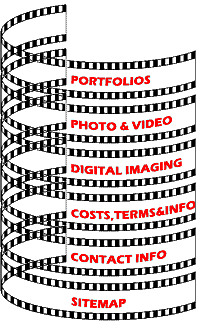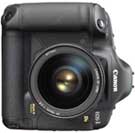|

Site Map:
Know
what
you're looking for?
Find it fast here
Proshooter.com
is John Lacy,
a commercial photographer
based in the
metro Detroit area.
We produce high quality photography
mostly for business to business marketing.
Our principal markets are the construction industry and the automotive
manufacturing industry. A significant portion of our work is also divided
among the hospitality industry (hotels, resorts, casinos & restaurants)
Our specialties include
>>
Architectural
(interior & exteriors),
>>
Automotive
(interiors & exteriors,
studio & location),
>>
Industrial,
shooting manufacturing facilities & equipment.
>> Environmental & Studio
Executive Portraiture
for Editorial, Annual Report
and similar,
>>
Studio Product
including electronics,
glass, plastic, package goods & food.
In addition to photography we also offer
>> Digital Retouching
>> Large Format Printing
>>Graphic Design & Offset Printing for brochures, catalogs and promotional
materials and
>>
Website Design & Hosting.
We've been in business since 1987
|
Late in 2005 this studio completed a transition to an all digital studio.
After having shot film for over 20 years we have also decided to retain our
film equipment and offer clients both as best fits their needs.
So what is the difference? Which is better now? As you may have read in
articles I've written over the last five years or so that film offers many
superior advantages, but then digital has quickly met and in some cases
eclipsed those advantages. Let's take a look point by point to see what
these differences are so we can make an educated and practical choice.
We can make a recommendation to you if you tell us what your needs and
priorities are for any given project.
First a summery of the current (mid 2005) Pros and Cons of each system.
Film Pros;
Cost - While the client may have to pay for the actual film, processing,
scans, and shipping of the physical materials the equipment (cameras,
lenses, etc) are reuseable and do not get quickly out dated as digital systems
do. The studio can spread the costs of the equipment out over the useable
live of the equipment which had been at least 5 years and as much as 20
years.
When using film most of the expenses are on the shooting invoice and if no
scans or retouching is required there are no open ended "post-production"
costs like there typically is with digital.
Color Reference - When shooting transparency film the color is
"locked" when the film is processed. Irregardless whether the color is true
to the subject when the film is viewed on a color balanced light table the
color should serve as a model as to how all reproduction of the image should
look. Assuming the color is correct a printer can use the original
transparency as a guide to how the color is supposed to look. With digital
(and negative film) the color is to a great extent interpreted. While the
color may be corrected on a color-balanced monitor, it may vary slightly
from monitor to monitor and requires much more diligent "color management"
to reach it's final destination in a form which is identical to it's
original.
Original Archival - Original materials for film are physical and can
can saved and stored for future use. Scanning technology continues to
improve so it is better to save the original film even after it is scanned
because a new scan made on newer equipment may prove superior in the future.
Film Cons;
Lack of Immediate Results - When film is shot it must be processed to
see the results. If the film is damaged anywhere along the way by radiation,
chemicals, power failure during processing, etc. the image may be lost. The
delay between making the exposure and seeing confirmation of the results is
considerable.
Any Digital Use Requires Scanning - Virtually all uses of photos
today involve digitizing at some point in the process. With film this
digitizing is made with a film scanner of some type. This step introduces
some interpretation of the image in it's color, contrast and resolution.
High quality scans may be expensive and lower quality scans are, well, lower
quality.
Duplicates of film are only exact clones if made at the time of exposure
- Any copy of the film adds interpretation as mentioned above and copies of
copies of copies in analog form degrade the image.
The Original may be lost or damaged - Even after processing the
original may have to be provided to the printer to use as a color guide. As
the original passes through many hands to opportunity for it to be lost or
damaged increases.
Film Grain and Scanning Noise - Film can be scanned to a resolution
in which the very grain that makes up the image becomes visible. With some
films, subjects and processes this can range from very subtle to very
apparent.
Digital Pros:
Immediate Results - The digital image can be viewed immediately after
the exposure to confirm it is correct in every way.
No Scans Required - The digital image when recorded is already
digitized at the highest quality of it's potential.
Duplicate files are exact clones of the original - Since the file is
already digital making a copy results in an exact duplicate. This allows
copies to be stored separately and damaged files to be easily replaced.
Proofs can be quickly reviewed or distributed on-line - By uploading
the images to a website there is no need to wait for processing and then
delivery of physical images.
Retouching is Part of the Process - Rather then contracting retouching of
images at a later stage as is common with film photography the digital file
requires post production processing. While correcting color we can also
correct perspective (for architectural subjects) and perform simple or
elaborate retouching to remove carpet stains, cracks in walls and floors,
acne or stray hairs, wrinkles in clothing, unwanted reflections, unwanted
signs or wires, people from backgrounds, even replace entire backgrounds all
in the first stages of the process, even before reviewing images from the
shoot.
Digital Cons:
Cost - Due to the high expense of equipment and the need to update
not only camera system but also support computer equipment regularly these
costs are passed on the client in higher fee and/or "post-production" costs.
In many cases the post production costs cannot be determined until the
project is under way. In the last year we have spent $8000 each on new
digital camera bodies, plus thousands of dollars on additional new lenses,
computer upgrades and new on-site printers. All to stay competitive on the
new digital frontier.
Color is Interpreted - While we have amazing control of color in the
digital image it is still subject to interpretation at every step. In some
color critical applications like construction products such as ceramic
tiles, window treatments or fabrics, or fabrics in fashion a color sample of
the subject may have to be provided to maintain color accuracy.
Limits to Resolution - Scans of film are limited by the capabilities
of the scanner and the resolving power of the film. In digital the sensor in
the camera can record an image no larger than the sensor is capable of.
While this may result in a sizeable and very useful image it is limited. Our
current digital system is 16.7megapixel, producing a 16bit image of about
50Mb. Some prohibitively expensive digital system produce 22MP even 54MP
images. We can produce 200Mb scans from medium format film, 350Mb file from
4x5 film. I believe that a 16.7MP image from our current digital system is
superior to a 4000dpi scan from medium format film, but not to a 2500dpi
scan of 4x5 film. This is partially due to the film resolution and the
capabilities of the scanner.
Necessity to Upgrade Equipment - Because of the advantages of newer,
higher resolution, lower noise and larger sensors it is required to replace
equipment much more quickly then film based systems. Because many of these
upgrades involve complete redesigns of the camera system they also may
require replacing lenses as well.
Okay, so now what?
Now that we've reviewed some of the differences in the two options here are
a few guidelines that have our studio towards digital but to not have
abandoned film as an option.
Digital is probably the best choice for 95% of current shooting
applications. What we are currently doing is charging a flat fee for shoots
that incorporates "digital capture fees" and an assistant. While the total
cost is higher than the fees only for film shooting, when you add the
expenses for film shooting the total cost is about the same.
Situations in which film shooting is recommended are shoots that have color
critical elements. We shoot these with neutral color balanced transparency
film with color balance light sources. The film becomes the color guide
throughout the processes leading to use of the images in printing or web
applications.
Shoots that require very high resolution are recommended to be shot on large
format film. While our current digital system is equal or exceeds the
resolution of our medium format film system it is not as high as scans made
from our large format film equipment. Examples of this are images in which
portions may have to be magnified greatly or copy work of large images like
paintings in which very small details are critical.
If the work flow of your operation is better suited for film, such as a
major ad agency in which you prefer to see unaltered original film to be
scanned and retouched by third party specialist then we are happy to
accommodate that need.
There may be other situations in which film may prove a better choice. We
are prepared to review your considerations, make a recommendation giving you
reasons for our recommendations and options.
If you have any comments or questions after having read all this please let
us know, thanks.

Whether we start with a digital
file or a scanned traditional negative, over 90% of our work is delivered
in a digital format. This digital file of the image may remain a file on a
disk or sent over the internet for use in a publication, website or video
or it may be output as a print or mural. The digital prints we produce are indistinguishable from conventional
photographic prints. They are not really good inkjet prints. They are
printed by laser on photographic stock. To learn more about our output
options
click here.
|
|


